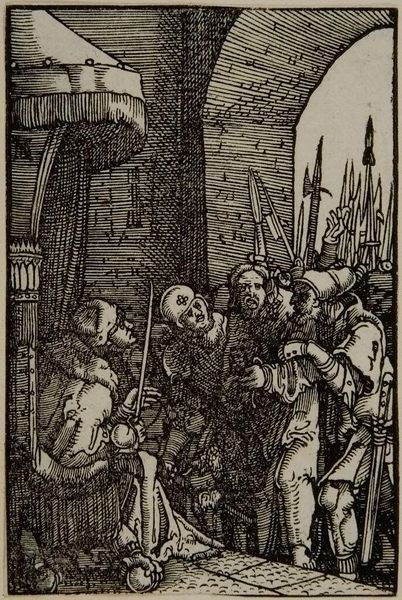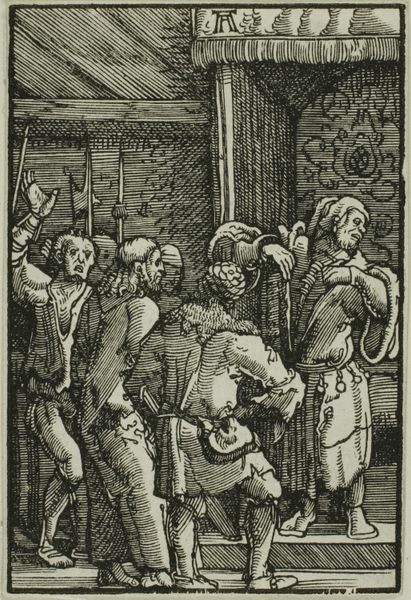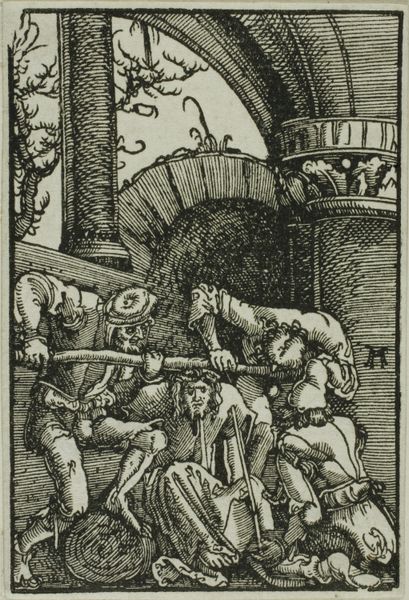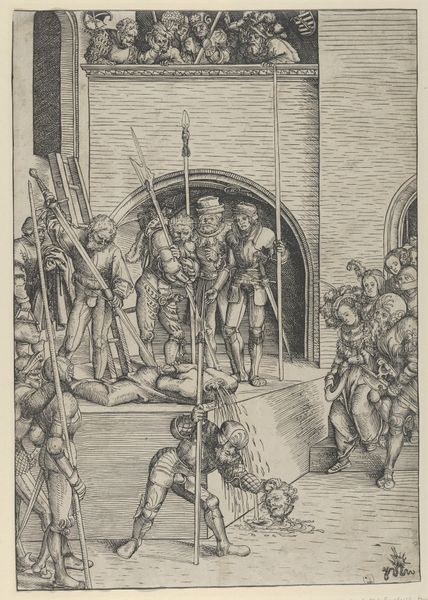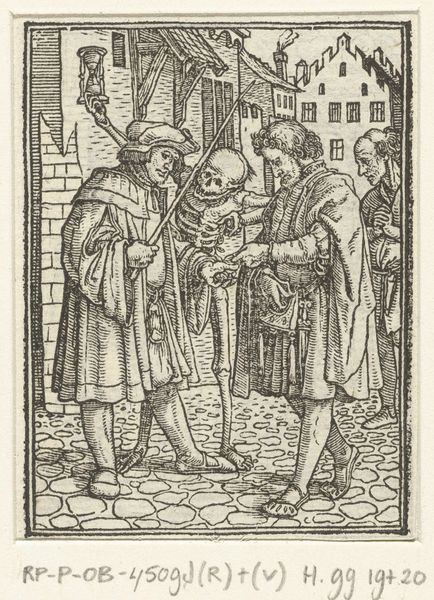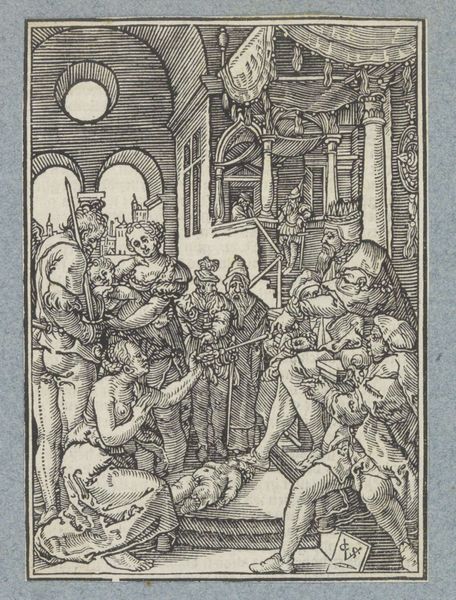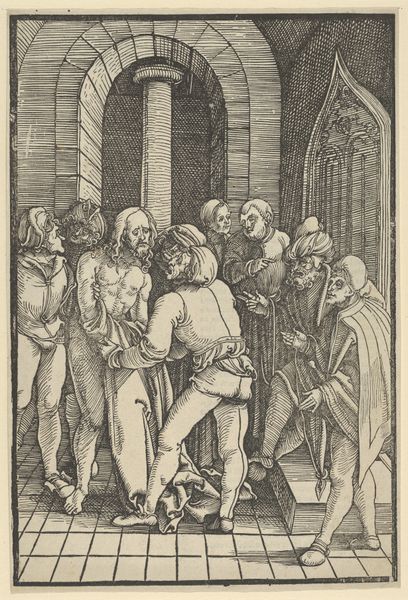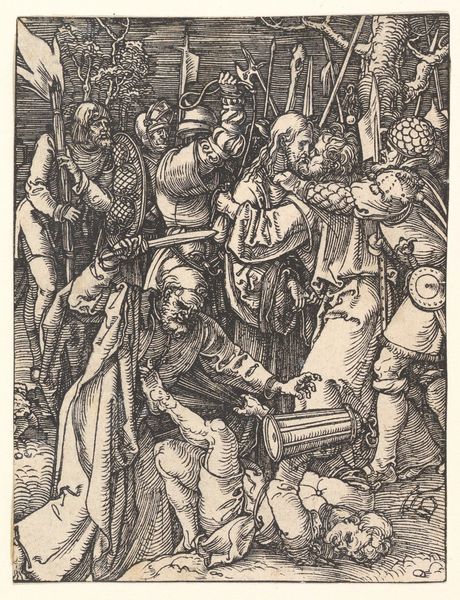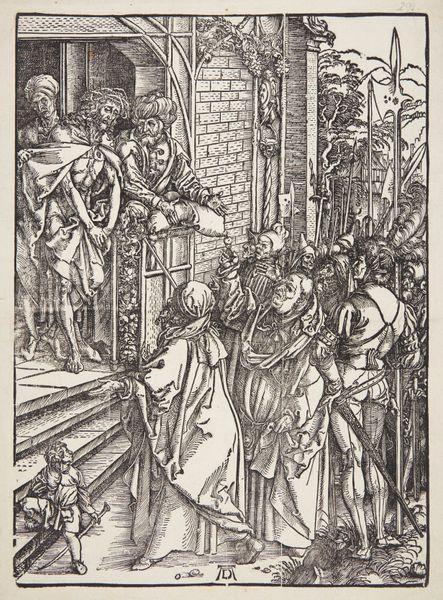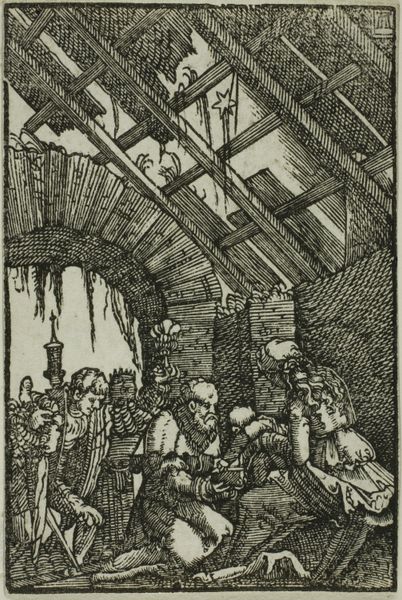
Christ Before Pilate, from The Fall and Redemption of Man 1513
0:00
0:00
drawing, print, paper, woodcut, engraving
#
drawing
# print
#
figuration
#
paper
#
woodcut
#
history-painting
#
northern-renaissance
#
engraving
Dimensions: 72 × 48 mm (image/block)
Copyright: Public Domain
Editor: This woodcut, "Christ Before Pilate," crafted in 1513 by Albrecht Altdorfer, has a rather unsettling energy. The stark black lines and compressed space almost feel claustrophobic. I'm curious about what stood out to you initially about this print? Curator: The dense application of line and the seemingly haphazard distribution of light and shadow betray a focus less on conventional beauty, and more on the practical labor involved in image production. Woodcut is a process. Note the clear carving marks, almost defiant in their visibility. It wasn't trying to hide the process, was it? Editor: That’s interesting; I hadn’t thought of it in terms of labor. So you’re saying the physical act of carving the block is integral to its meaning? Curator: Absolutely. Consider also the function of prints at this time: relatively inexpensive means of disseminating religious narratives to a wide audience. Altdorfer wasn't just illustrating a bible story; he was participating in a visual economy, making faith accessible to a burgeoning consumer base. Editor: The almost brutal mark-making also underscores a very real violence that’s intrinsic to this imagery. Curator: Exactly! This image relies on production, circulation, and the economy. It is all intricately tied into its social purpose. This is about production as protest, production as ministry, if you will. What about you - what's your understanding of this print, now? Editor: Thinking about it that way makes the piece feel much more connected to everyday life in the 16th century and highlights that artwork are produced, traded, consumed. Curator: Indeed. I am glad we’ve helped give access to the modes of consumption of this religious iconography. It makes this history very physical, doesn't it?
Comments
No comments
Be the first to comment and join the conversation on the ultimate creative platform.
